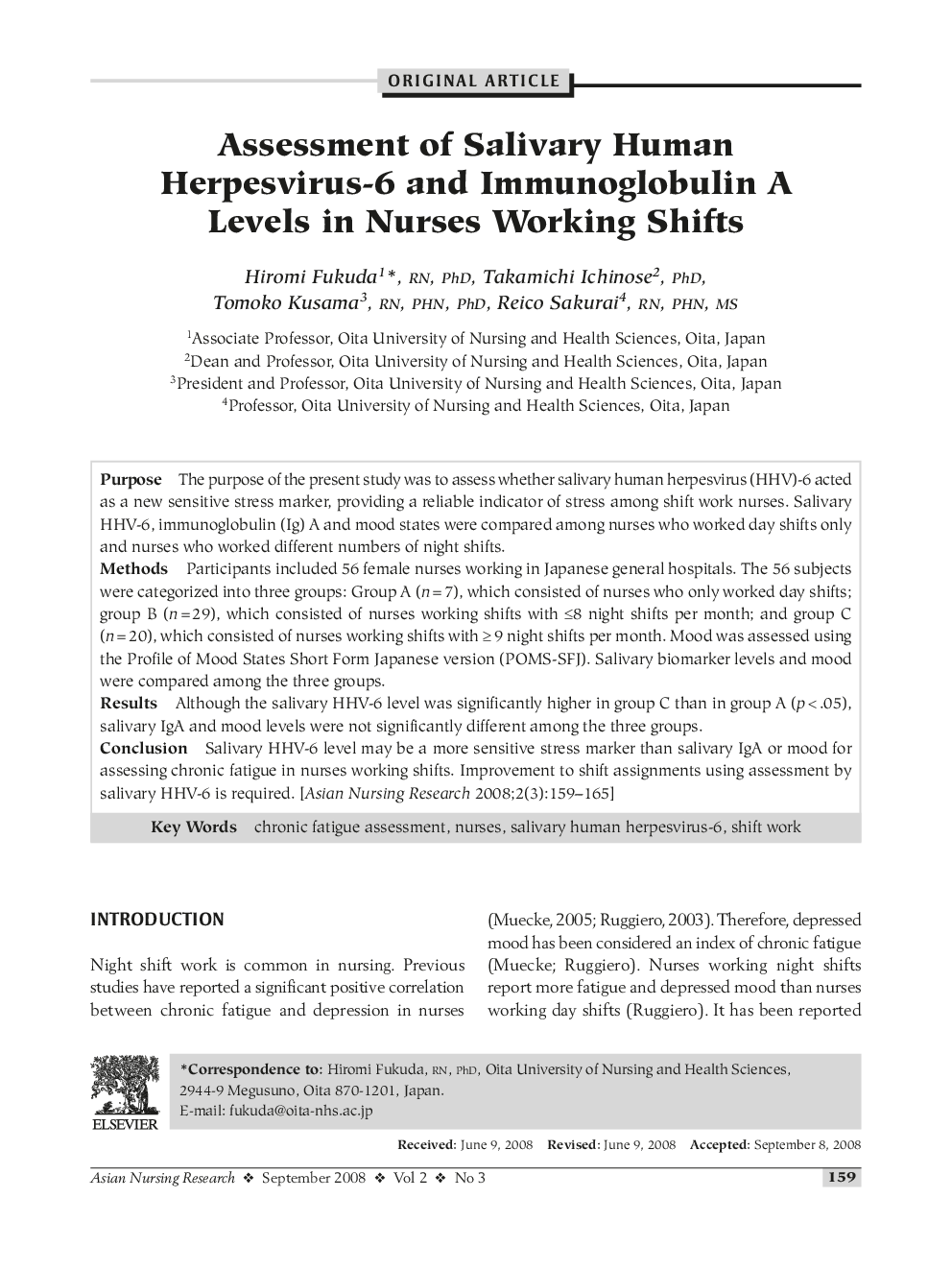| Article ID | Journal | Published Year | Pages | File Type |
|---|---|---|---|---|
| 2645506 | Asian Nursing Research | 2008 | 7 Pages |
PurposeThe purpose of the present study was to assess whether salivary human herpesvirus (HHV)-6 acted as a new sensitive stress marker, providing a reliable indicator of stress among shift work nurses. Salivary HHV-6, immunoglobulin (Ig) A and mood states were compared among nurses who worked day shifts only and nurses who worked different numbers of night shifts.MethodsParticipants included 56 female nurses working in Japanese general hospitals. The 56 subjects were categorized into three groups: Group A (n = 7), which consisted of nurses who only worked day shifts; group B (n = 29), which consisted of nurses working shifts with £8 night shifts per month; and group C (n = 20), which consisted of nurses working shifts with 3 9 night shifts per month. Mood was assessed using the Profile of Mood States Short Form Japanese version (POMS-SFJ). Salivary biomarker levels and mood were compared among the three groups.ResultsAlthough the salivary HHV-6 level was significantly higher in group C than in group A (p < .05), salivary IgA and mood levels were not significantly different among the three groups.ConclusionSalivary HHV-6 level may be a more sensitive stress marker than salivary IgA or mood for assessing chronic fatigue in nurses working shifts. Improvement to shift assignments using assessment by salivary HHV-6 is required.
